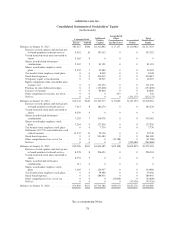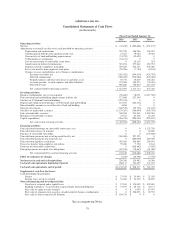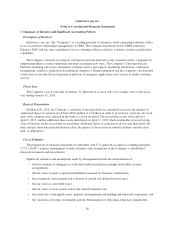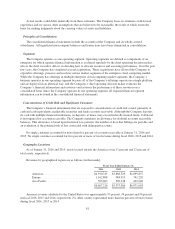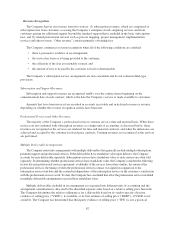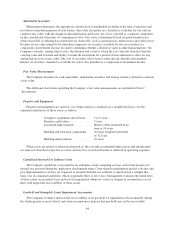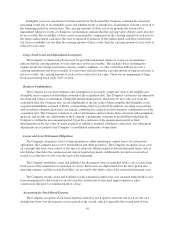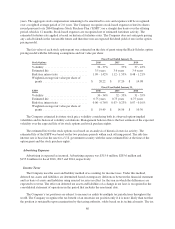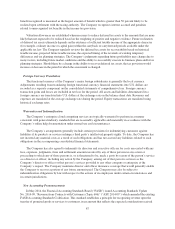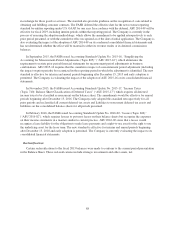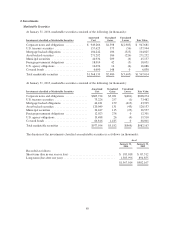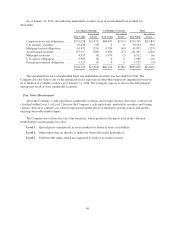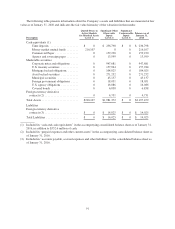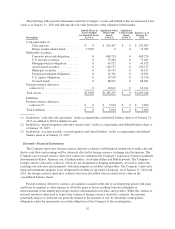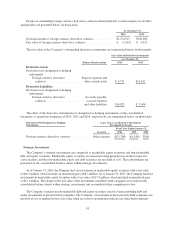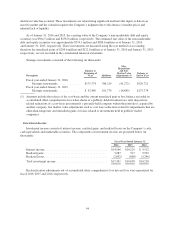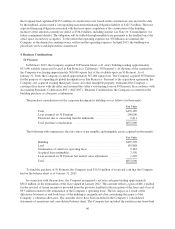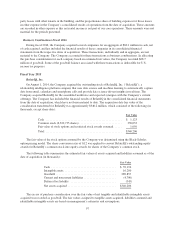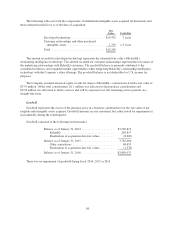Salesforce.com 2016 Annual Report Download - page 95
Download and view the complete annual report
Please find page 95 of the 2016 Salesforce.com annual report below. You can navigate through the pages in the report by either clicking on the pages listed below, or by using the keyword search tool below to find specific information within the annual report.in exchange for those goods or services. The standard also provides guidance on the recognition of costs related to
obtaining and fulfilling customer contracts. The FASB deferred the effective date for the new revenue reporting
standard for entities reporting under U.S. GAAP for one year. In accordance with the deferral, ASU 2014-09 will be
effective for fiscal 2019, including interim periods within that reporting period. The Company is currently in the
process of assessing the adoption methodology, which allows the amendment to be applied retrospectively to each
prior period presented, or with the cumulative effect recognized as of the date of initial application. The Company is
also evaluating the impact of the adoption of ASU 2014-09 on its condensed consolidated financial statements and
has not determined whether the effect will be material to either its revenue results or its deferred commissions
balances.
In September 2015, the FASB issued Accounting Standards Update No. 2015-16, “Simplifying the
Accounting for Measurement-Period Adjustments (Topic 805)” (“ASU 2015-16”) which eliminates the
requirement to restate prior period financial statements for measurement period adjustments in business
combinations. ASU 2015-16 requires that the cumulative impact of a measurement period adjustment (including
the impact on prior periods) be recognized in the reporting period in which the adjustment is identified. The new
standard is effective for interim and annual periods beginning after December 15, 2015 and early adoption is
permitted. The Company is evaluating the impact of the adoption of ASU 2015-16 on its consolidated financial
statements.
In November 2015, the FASB issued Accounting Standards Update No. 2015-17, “Income Taxes
(Topic 740): Balance Sheet Classification of Deferred Taxes” (“ASU 2015-17”) which requires all deferred
income taxes to be classified as noncurrent on the balance sheet. The amendments would be effective for annual
periods beginning after December 15, 2016. The Company early adopted this standard retrospectively for all
prior periods and reclassified all current deferred tax assets and liabilities to noncurrent deferred tax assets and
liabilities on the consolidated balance sheets for all periods presented.
In February 2016, the FASB issued Accounting Standards Update No. 2016-02, “Leases (Topic 842)”
(“ASU 2016-02”), which requires lessees to put most leases on their balance sheets but recognize the expenses
on their income statements in a manner similar to current practice. ASU 2016-02 states that a lessee would
recognize a lease liability for the obligation to make lease payments and a right-to-use asset for the right to use
the underlying asset for the lease term. The new standard is effective for interim and annual periods beginning
after December 15, 2018 and early adoption is permitted. The Company is currently evaluating the impact to its
consolidated financial statements.
Reclassifications
Certain reclassifications to the fiscal 2015 balances were made to conform to the current period presentation
in the Balance Sheet. These reclassifications include strategic investments and other assets, net.
88


